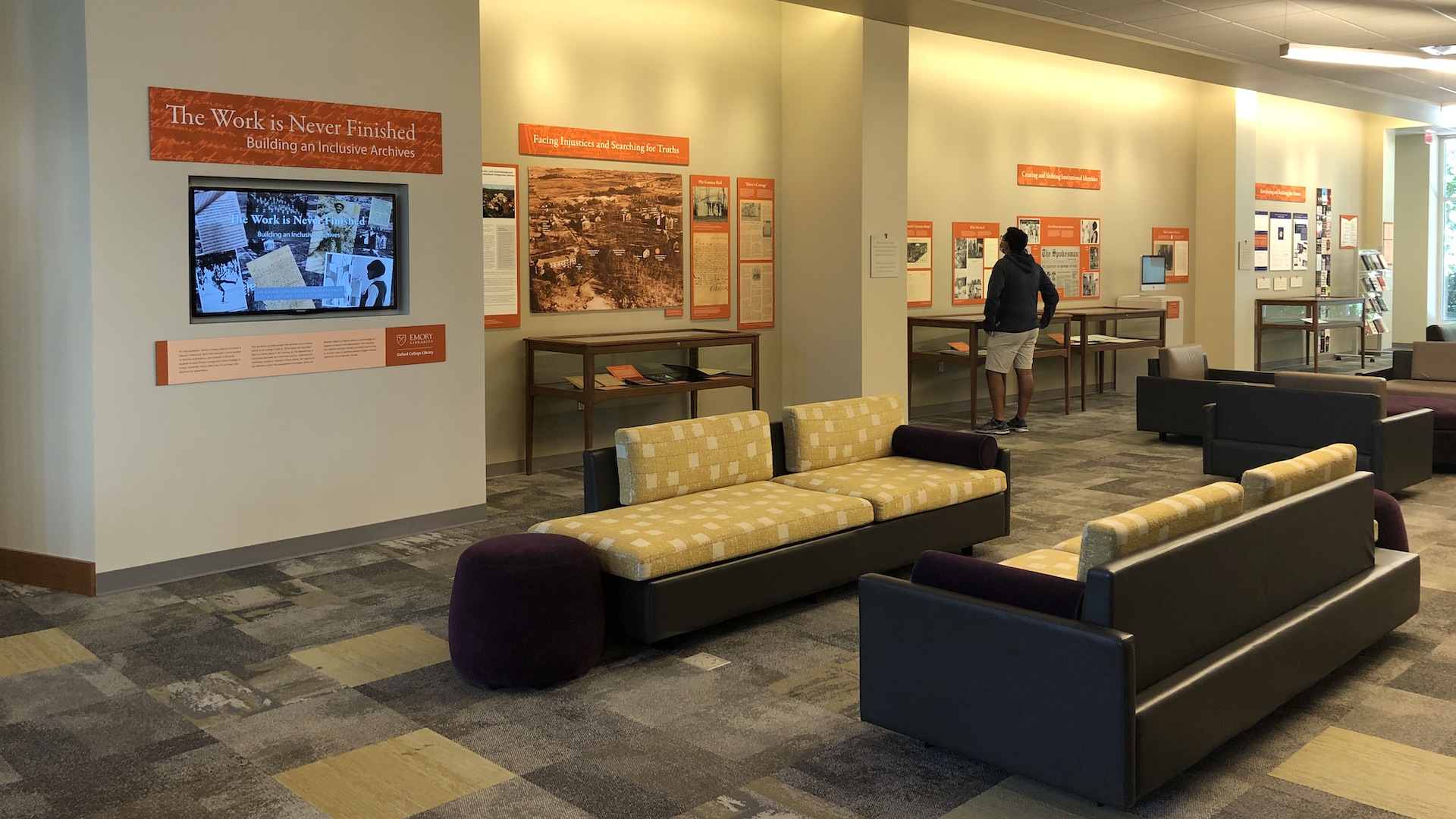New digital exhibit addresses Emory’s early silence on race and slavery

The exhibit is designed to be incorporated into the curriculum and expands opportunities for student research.
The Oxford College Library has launched a digital exhibit that explores institutional silences around matters of race and slavery throughout Emory’s early history. Based on an original exhibit from 2021 titled “The Work Is Never Finished,” this online version is available to the public and will serve as a valuable teaching and learning tool for Oxford students and faculty alike.
The original exhibit was designed after an April 2021 report from the Task Force on Untold Stories and Disenfranchised Populations recommended the university incorporate its own history into the curriculum. The goal was to allow students to engage with and contextualize the school’s history—and the Library listened.
“We want to educate our faculty, staff, and students that they are the current record keepers, and to be aware of their potential biases when creating and documenting institutional memories,” said Ellen Neufeld, interim director of the Oxford Library. “With this exhibit we've explored why archival silences exist across our own college’s records.”
The exhibit highlights the relationship among three key archival concepts: primary sources, archival silence, and reparative description.
For example, the exhibit details historical descriptions of Catherine Boyd, a Black woman enslaved by Bishop James Osgood Andrew, the president of the Board of Trustees when Emory College opened in 1839. Stories around Boyd’s living quarters, often referred to as Kitty’s Cottage, “provided a sanitized narrative of [her] enslavement by the Andrew family,” the exhibit reads. Using primary sources, it highlights missing perspectives (archival silence), and provides a more comprehensive—and reparative—description of Boyd’s life and her relationship to the university’s founding members.
Stories like this are what drew Devon Goss, assistant professor of sociology, to be one of the first to use the exhibit in a classroom.
“I used the exhibit in my Introduction to Sociology course in order to highlight the ways in which institutions, including colleges and universities like Emory, are racialized entities,” Goss said. “The exhibit does an excellent job of bringing to the surface memories and histories that have been historically silenced here at Oxford. This concept ties really well with qualitative research that sociologists perform, where they are seeing who is left out of a conversation, institution, or experience, and asking why that might be. I think that students really appreciated the chance to reflect on our own institution within our class, because that history directly reflects their experiences as Emory students today.”
Kerry Bowden, coordinator of archives and special collections at the Oxford College Library, was the lead curator of the original exhibit, which opened fall 2021. Bowden stresses that the exhibit, in both forms, would not have been possible without the support of Kitty McNeil, who retired as dean of the library at the end of the 2023 school year. Credits for the original exhibit can be found on the website here. The digital version was created by Alexandrea Kord, Bowden, Stephanie Darden, and Jacob Lackner.
Bowden hopes that, in the spirt of the exhibit’s name, the work never does quite finish.
“There’s a posterity aspect to it, but more than that, the intention is to continue working with all of this material and to find out as much as we can,” she said. “The digital version now allows anyone—not just undergraduates who happened to be on campus for the physical exhibit—to explore what is known and what is yet to be discovered about Oxford.”
It’s an opportunity, she explains, for students be inspired and learn more about their educational home—and, in doing their own research, to speak into the silences of history.